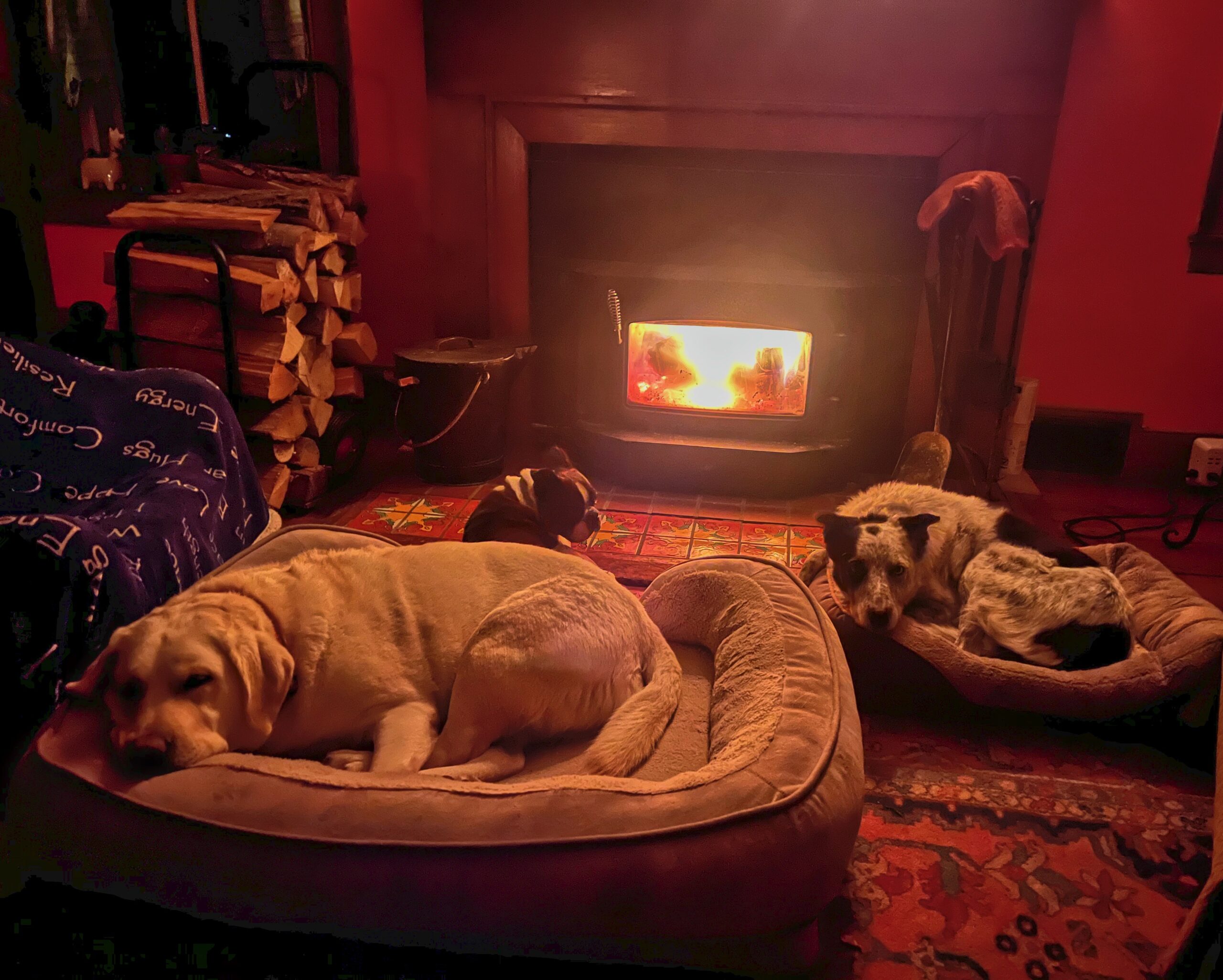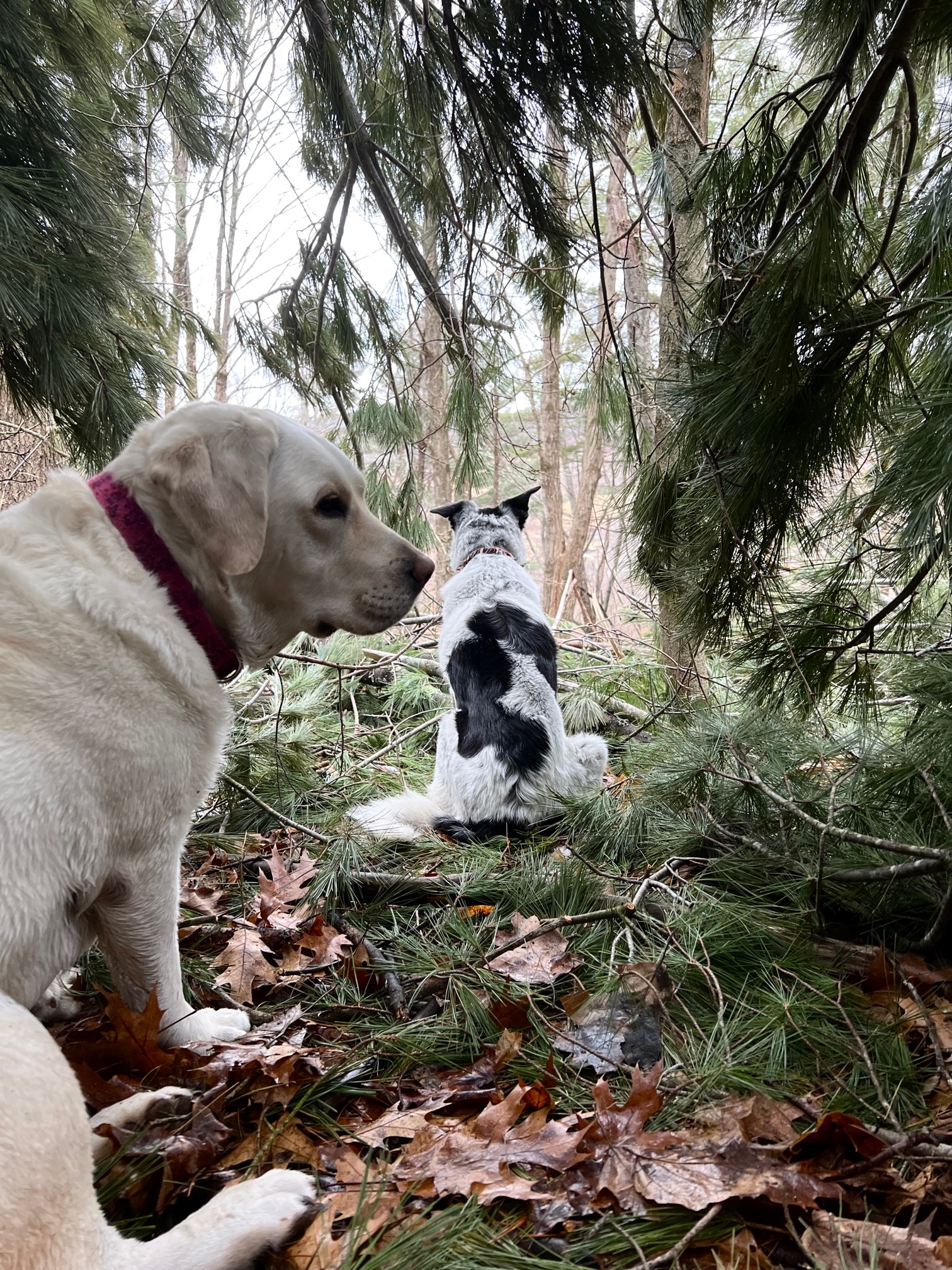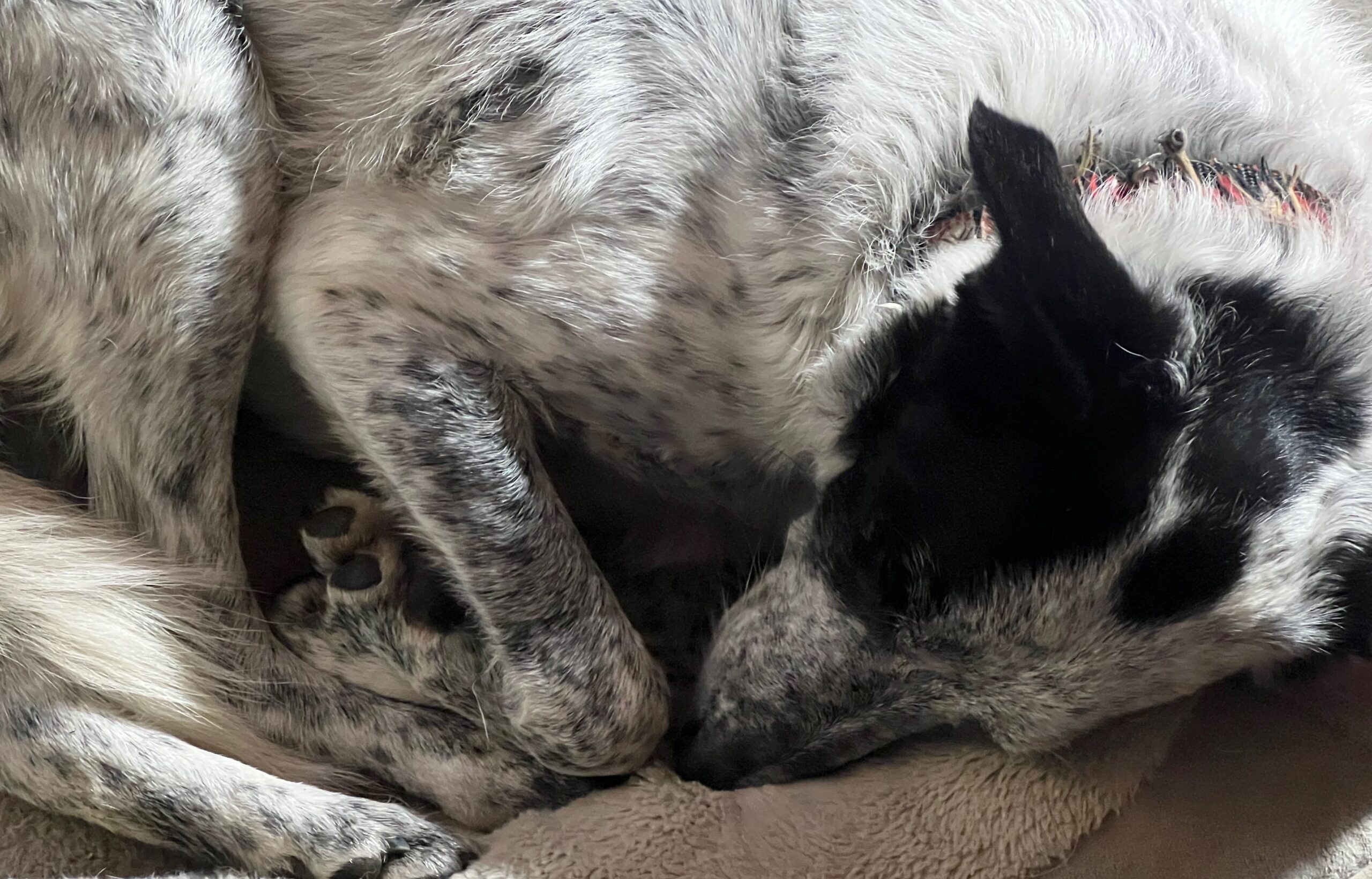Some of you might recall the post I wrote the other day about my hesitating to take on the case of a dog whose loving and dedicated owner was seeking help with a dog she felt was aggressive, loud, alarmingly fearful, out-of-control, and full of love.
I was prepared to say no, aggressive dogs can be dangerous, and if I can’t see them, it can be challenging to help them.
I told her I wasn’t sure – I’ll call her Jane, not her real name (I’ll call the dog Bunny) – and she wrote back, sending a photo of the dog and asking me to reconsider helping her. I’m not doing the Dog Support for money, obviously, but as a way of my helping people and their dogs and getting paid something for it.
(Photo: Zinnia in front of my reading chair)
Several people messaged me, urging me to help the woman and her dog.
I’m a pretty good judge of aggression, even from a photo. I liked the dog; I knew this was a fearful dog, not an aggressive one. She picked fights with dogs but had drawn no blood and hurt no person. It seemed clear to me that she was just scared. She needed to learn how to be calm and safe.
If I walked away from this very appealing-looking dog and a very loving and kind owner, what good was I?
So far, the people asking me for help have mostly been younger and middle-aged women who love their dogs dearly enough to want to get some help healing and living with them. Two or three have been wealthy, the others working class and frugal but conscientious. They are the best dog owners.
People who don’t care about their dogs don’t seek help as a rule, not at any price, even as little as $65.
So I agreed to try.
We talked this afternoon. I liked Jane right away. We got directly to work.
She was friendly, intelligent, and committed to helping her dog. Bunny had picked fights with at least two other dogs, barked incessantly, freaked out when she left the house, and jumped on visitors and wouldn’t quiet down or leave them alone.
Bunny was a shelter dog who had been with Jane for nearly a year but had not settled down or quieted. She had been through several different homes and lived with some big and older dogs. She was several years old.
She sat briefly on command but had no other visible training. She had become very attached to Jane but had not had to work for her new life or learn how to live in her new home.
I liked Jane and connected with her right away. She was intelligent, easy to talk to, and happy to learn and listen.
We clicked right away, as often happens in my Dog Support sessions. So far, I’m drawing some lovely people. I’ve found that people who love dogs tend to be friendly, I know it’s a generalization, but it’s my experience.
We spent an hour on the phone, and she paid $65 – she insisted on paying even though I wasn’t positive yet that I could help.
I threw a bunch of ideas at her – calming training, walking with friends and their dogs, seeing if she could get Bunny into a crate using food and treats.
It sounded like Bunny had been through a lot, but she was not an aggressive dog; she was a frightened dog and had not yet been shown how to behave in her home, treat visitors with respect and learn to trust and be calm around other dogs.
I could tell she was a trainable dog – she slept peacefully next to Jane and knew which friends had treats and which didn’t.
She likes food and responds to it. We discussed new technological tools for curbing barking and hissing cans for jumping.
I said humane spray and buzz collars could also stop the barking. We talked about “push” dogs who rush in and out of houses before the humans, reinforcing their idea that they are the pack leaders.
As always, there is a human element to dog issues like this, and Jane and I talked openly about it.
Jane is a kind and gentle person, not comfortable forcing her will on a sweet dog with a brutal history. I told her that for this to work; she had to assume the leader’s role in the house positively and lovingly.
It wasn’t easy, but it was very doable if she was committed.
I said she had to look Bunny in the eye and project confidence, calm, and clarity: If you are going to live with me, we must respect one another. I will feed you, shelter you, exercise you and love you,u, and in return, I ask you to respect me, other dogs, this house, and the friends who visit me often.
This is not negotiable, and I mean it.
And she had to mean it, I said, or it wouldn’t work. I also asked her to take this seriously. Poorly trained dogs who fight often become dogs who bite, and people who have dogs who bite end up dealing with the courts and the police and paying hefty fines.
The dogs often end up dead. Training saves dogs’ lives and protects the people who own them.
I told Jane she needed to boost her confidence and certainty; I could tell she wasn’t sure she could be strong enough to do that. She admitted that she projected confusion and uncertainty in her training. But she was committed to making this work.
Then, as we talked, her confidence and determination seemed to swell. She loved that dog very much, and the dog loved her.
She began to light up over the thought that she could turn this around. And she absolutely can, I’m sure of it. She must always be positive but also be firm. Bonny had to do what she was told to do.
She was halfway there. She just needed to clear her head when the new training began and mean it.
I am so glad I accepted this case, and I hope Jane was also. She seemed pleased, fired up, and full of hope. I asked her which things I suggested worked for her, and she named four or five. I said I wanted to stay in touch with her – at no extra charge – follow her progress, shote her up when she stumbled, and keep experimenting and innovating until we hit pay dirt.
So much of our relationship with dogs centers around attachment and psychological issues, both of which I have been studying and living for years. I want to share what I have learned.
Meeting someone like Jane, talking with her, and sensing the hope, excitement, and relief was worth everything. She didn’t know what to do. She has a bunch of ideas to try out. I firmly believe she can do it.
This is why I love doing this work. You don’t have an aggressive dog, Jane, I said. You have a frightened dog who has been kicked around in life and is looking for a safe place.
I told you to be the safe place; you be the pack’s leader. That’s what she wants. Most of the time, it’s the human, not the dog.
I expect to hear from Jane in a week or so. I’ll pass the news along. If you have a dog problem and need help, contact Dog Support. I charge $65 an hour as of January 1 and can meet you on Zoom, Facetime, or the telephone.
I do three to five sessions a week. If you need help, you can go here to check it out.
Only the strong get help.
This is a good thing for me to be doing.





